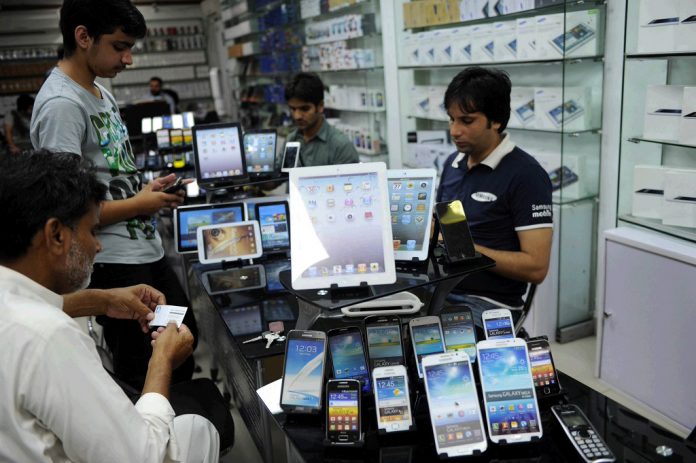—GSMA report says significant investment required in Pakistan’s mobile cellphone required to connect unconnected
ISLAMABAD: The cellphone market in Pakistan has demonstrated a significant growth over the past decade with the number of unique subscribers increasing by 37.4 million (85.1 per cent) between 2008 and 2018, however, a significant share of the population remains unconnected to mobile services, Global System for Mobile Communications Association (GSMA) said in its latest report on Pakistan
The majority of population (59.7 per cent or 120 million people) in Pakistan is still unconnected to a mobile network, suggesting a need for significant investment to drive expansion of mobile market and to improve affordability of services for consumers.
Unique subscriber mobile penetration in Pakistan stood at 40.3 per cent in the third quarter of 2018, it said.
The report said that the mobile sector expansion in Pakistan has been driven by significant capital expenditure by mobile operators, who, on average, have made annual capital investments equivalent to around 25 per cent of their revenue during the last decade.
The total mobile sector revenues were US $3.4 billion in 2017, equivalent to 1.1 per cent of Pakistan’s gross domestic product (GDP), while the sector contributed approximately US$ 1.8 billion of direct economic value to Pakistan in 2017 (0.6 per cent of the GDP).
The report noted that this contribution to GDP is relatively low compared to international benchmarks, suggesting considerable scope for expansion. “Further significant investment is required to drive expansion of mobile market and to improve affordability of services for consumers,” it said.
It was also highlighted that in particular, a focus on expanding network coverage and investments in quality of data services could accelerate growth of the sector in Pakistan.
“Facilitating the growth of mobile sector aligns with new government’s economic objectives, which are set out in PTI Manifesto and the PTI Digital Policy 2018. These include achieving inclusive economic growth, creating new jobs and transforming Pakistan into a knowledge economy,” the report noted.
In this context, incentivising further investment to improve availability and quality of mobile networks, as well as improving affordability of mobile services, should become a policy priority, particularly because of the low level of unique mobile subscriber penetration and a low level of fixed broadband penetration in Pakistan (9 subscriptions per 1,000 people in 2017).
The report said that further improvements in affordability of mobile services and devices would contribute to mobile market expansion and development of digital economy in Pakistan.
“Moreover, an upfront cost of a handset represents an affordability challenge for those lower-income Pakistanis who do not have access to finance, which would enable them to pay cost of a mobile phone in installments,” it said.
The affordability of handsets in Pakistan may be impacted in near future by upcoming regulatory and tax changes, the report said, adding that in addition, the Device Identification, Registration and Blocking System (DIRBS) recently launched by Pakistan Telecommunication Authority (PTA) could increase average price of a mobile phone in Pakistani market, as legal handsets are generally more expensive than counterfeit and illegal devices, unless it is mitigated by government measures, aimed at improving the affordability of handsets.




